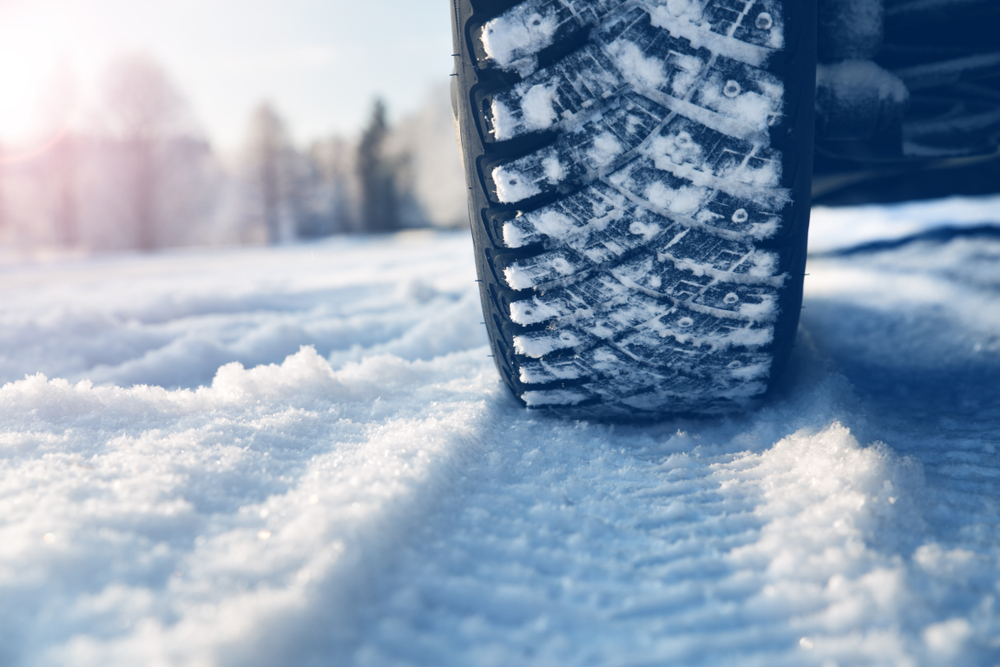Seasonal Driving Tips for Pagosa Springs: Staying Safe Year-Round
Driving in Pagosa Springs, CO, presents a unique set of challenges and rewards throughout the year. Known for its stunning natural beauty and outdoor activities, this charming town nestled in the San Juan Mountains can be a paradise for those who enjoy scenic drives. However, the varying weather conditions in this mountainous region can make driving a bit tricky, depending on the season. Whether you’re a local resident or a visitor, it’s essential to be prepared for the conditions you may encounter. By understanding the specific challenges each season brings, you can stay safe and make the most of your time behind the wheel. In this blog, we will cover the seasonal driving tips you need for safe driving in Pagosa Springs year-round, including important car insurance safety considerations to keep in mind.
Pagosa Springs’ Unique Weather
Pagosa Springs experiences a diverse climate that dramatically shifts throughout the year, making it essential for anyone driving in Pagosa Springs, CO, to stay prepared for each season. Winters in Pagosa Springs can be harsh, with heavy snowfall, icy roads, and low visibility from snowstorms. Spring and fall, while milder, can still bring unexpected weather changes such as sudden rain showers or even early snowfalls. Summer brings more predictable conditions with warm, sunny weather, but flash floods and thunderstorms can occur, particularly in the afternoon. Drivers must adapt their driving habits to the season to ensure they stay safe while navigating these varying weather conditions.
In winter, Pagosa Springs can experience significant snowfall, especially in the mountainous areas surrounding the town. Icy roads and snow-packed highways are common, requiring vehicles to be equipped with proper tires and chains, depending on the situation. Spring and fall may present more unpredictable conditions, such as rain and fog, which can create slick roads and reduced visibility. During the summer months, while temperatures tend to rise, the area is prone to thunderstorms that can quickly shift road conditions from dry to wet, increasing the risk of hydroplaning.
Being aware of these fluctuations and adjusting driving behaviors accordingly is crucial for every driver who frequently navigates this beautiful yet sometimes challenging environment. Additionally, checking weather forecasts before heading out and understanding how roads may change with these weather patterns can make a substantial difference in your safety.
Winter Driving: Prepare for Snow and Ice
When winter sets in, driving in Pagosa Springs, CO, becomes an entirely different experience. With the surrounding mountains and higher elevations, snowstorms and icy conditions are a regular occurrence, and drivers need to be prepared. If you’re planning to drive in these conditions, it’s important to ensure your vehicle is properly equipped with snow tires or chains, depending on the situation. In some areas around Pagosa Springs, it’s not uncommon for snow to accumulate quickly, making it difficult for vehicles without the proper tires to maintain traction.
If you’re driving in the winter, make sure to check your car’s antifreeze levels, tire pressure, and overall vehicle readiness. Keeping an emergency kit with essentials like a flashlight, blankets, water, and non-perishable food is also a good idea in case you become stranded. Keep in mind that mountain roads, especially those that lead up to the higher elevations surrounding Pagosa Springs, can be treacherous in the winter. Slow down when driving on icy or snow-covered roads and increase your following distance to allow ample space for stopping.
Aside from vehicle preparation, it’s wise to stay informed about road conditions and closures. During particularly heavy snowfalls or storms, certain routes may become impassable, and travel advisories may be issued. Be sure to check weather reports and road conditions before hitting the road.
Additionally, it’s worth considering your auto insurance coverage in winter months. Car insurance safety becomes especially relevant during this time of year. You may want to reassess your auto insurance coverage to ensure it includes comprehensive coverage that can protect your vehicle in case of an accident or weather-related damage. Having adequate coverage can give you peace of mind while driving in the more hazardous winter conditions.
Spring and Fall: Navigating Unpredictable Weather
As the seasons transition, spring and fall in Pagosa Springs can bring beautiful scenery, but they also present their own set of challenges for drivers. The weather during these seasons can change quickly, and drivers must be ready for everything from sunshine to sudden downpours or snowflakes. When driving during the spring months, rain and sleet are common, which can cause slick road surfaces and reduce visibility. Drivers should be cautious of standing water on the road, which could cause hydroplaning, especially when traveling at high speeds. Additionally, morning fog is a common occurrence during these seasons, which can make it difficult to see other vehicles or road signs.
Similarly, fall can bring sudden temperature drops, particularly at night, which may lead to unexpected frost on the roads in the morning. With fall foliage at its peak, drivers in Pagosa Springs may also find themselves distracted by the stunning views, which can lead to slower reaction times in an emergency. During both spring and fall, it’s crucial to adjust your driving habits based on the weather. Maintain a safe speed, increase your following distance, and be prepared for slippery or wet road conditions.
One tip for driving in Colorado weather conditions during spring and fall is to ensure your wipers are functioning properly. With rain, sleet, or even early snowfall, good visibility is key to staying safe. Also, check your tires regularly to ensure they are not worn down, as this can improve grip on slick or wet surfaces. If you’re planning to drive in Pagosa Springs during these seasons, remember that conditions can change rapidly. Keeping your speed under control and being extra cautious on unfamiliar routes can help prevent accidents.
If you’re driving in Pagosa Springs during the spring or fall months, it’s also a good idea to keep your vehicle in top condition. Your brakes, headlights, and wipers should all be working properly to ensure optimal safety. As you prepare for these unpredictable weather conditions, consider updating your auto insurance coverage as well. A thorough review of your coverage options can help ensure you’re well-prepared for any weather-related accidents, whether you’re driving in spring rain or fall snow.
Summer Driving: Staying Safe in Thunderstorms and Flash Floods
Summer in Pagosa Springs can be a great time for outdoor activities, with its warm and sunny days. However, the season also brings thunderstorms, which can change road conditions quickly. While summer storms may seem brief, they can cause flash floods, particularly in areas near rivers or creeks. Roads that were once dry can become flooded in a matter of minutes, and driving through standing water can be dangerous. When driving in Pagosa Springs during the summer, always be mindful of the weather forecast and watch for signs of stormy weather.
If you’re caught in a thunderstorm or heavy rain, it’s important to pull over and wait for conditions to improve if visibility becomes too poor. Avoid driving through flooded roads, even if the water seems shallow. Just six inches of moving water can sweep your vehicle off the road. In addition to the risk of flooding, summer thunderstorms can bring strong winds, which can make it harder to control your vehicle. Make sure your vehicle is equipped with the right tires for wet conditions, and reduce your speed when driving in a storm to maintain better control.
It’s also crucial to stay informed about your car insurance policy during the summer months. With the possibility of flooding or storm-related accidents, you may want to ensure that your auto insurance includes sufficient coverage for weather-related damage. If you’re planning to drive frequently in the summer, consider additional coverage options like comprehensive coverage or uninsured motorist protection.
Year-Round Car Insurance Safety
When driving in Pagosa Springs, CO, it’s essential to keep in mind the importance of car insurance safety year-round. Regardless of the season, your vehicle is at risk of weather-related damage, accidents, or other unforeseen events. Ensuring that your auto insurance coverage is adequate can help protect you from the financial burden of an accident or vehicle damage. Comprehensive coverage is particularly useful in regions like Pagosa Springs, where weather conditions can change dramatically and quickly.
Before hitting the road, make sure your auto insurance policy includes coverage for things like hail, floods, or snowstorms. In addition, verify that your policy offers roadside assistance services, which can be extremely helpful if you find yourself stranded in a remote area or after a winter storm. Lastly, remember to review your policy regularly to ensure that it still meets your needs, especially as the seasons change.
When you’re prepared with both the proper driving habits and the right car insurance safety features, you can enjoy all that Pagosa Springs has to offer while staying safe behind the wheel year-round.
Need an Insurance Company in Pagosa Springs, CO?
Here at Smith Insurance, we’re here to make insurance easy and tailored just for you. Our dedicated team is committed to finding the best coverage options—whether it’s for your car, home, business, or loved ones—so you can focus on what matters most. We take pride in offering personalized guidance and affordable solutions that fit your unique needs. Reach out to us today for a free quote, and let’s start building the peace of mind you deserve. We’re just a call or message away, ready to protect what matters most to you!


